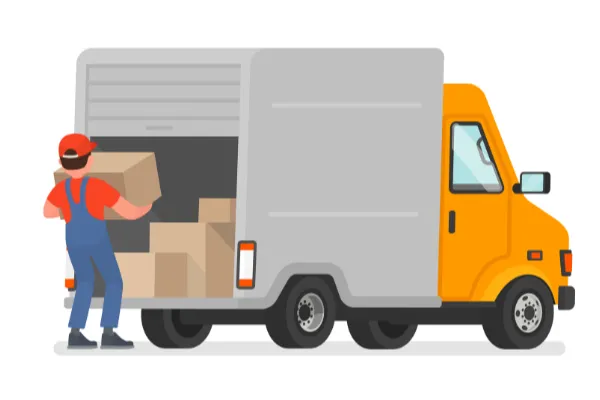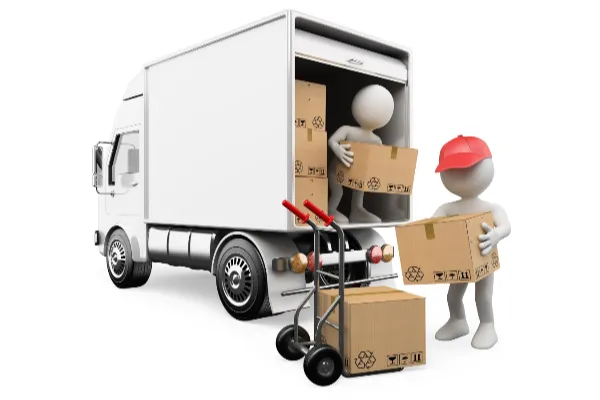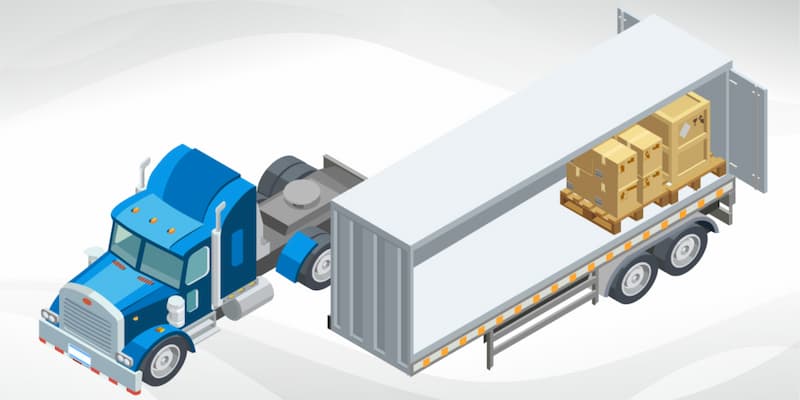Understanding LTL freight shipping is crucial for conducting business if your company uses a retail delivery model that ships tangible goods larger than parcel size.
LTL freight carriers specialize in effectively optimizing the load routing for shippers. LTL shipping is popular among shippers because it gives them flexibility, economic efficiency, and environmental friendliness for freight requirements that do not require an entire truckload (FTL).
LTL shipping is complicated because each carrier provides a different service and strategy to accommodate different shippers’ needs. The ideal methods for routing LTL freight shipments are examined in this informative article.
Let’s begin by spending a brief moment learning how LTL freight shipping functions.
How Does LTL Freight Work?
“LTL” means “less than truckload.” Less than Truckload (LTL) shipping is a truckload shipping method used to transport a shipment that is larger than a parcel but light enough or small enough that it doesn’t require a full truckload.
LTL shipments frequently share available space on the truck with other shipments from different shippers or carriers because they don’t fill the entire truck.
By quantifying the definition in terms of weight categories for different freight classes, we can better comprehend the topic. The LTL freight class includes weight ranges of 150 to 15,000 pounds. In the National Motor Freight Classification (NMFC) system, this includes a number of freight class designations.
There are 18 classes, numbered from 50 to 500, with lower classes generally being less expensive and easier to ship. For instance, durable freight with a freight class of 50 easily fits on a typical 4′ x 4′ pallet and weighs 50 pounds or more per cubic foot. By using the official NMFC freight class categories, you can learn more.
The official freight class will be indicated on the bill of lading that is included with truckload shipments.
The freight class that should appear on the bill of lading for truckload shipments is determined by a number of variables, in addition to the truckload’s actual weight, which together determine the truckload’s transportability. Weight per unit of volume (density), the amount of room needed to store the shipment (stowability), ease of handling, and the likelihood that a shipment will sustain damage or be at fault for damage (liability) are a few examples.
You must take into account all of these factors in order to accurately enter a freight class on a bill of lading or correctly interpret a bill of lading.

Benefits of LTL Freight
Cost Savings
LTL freight entails a number of smaller shipments totaling a full truckload. You only pay for the space you use because your shipment only takes up a portion of the truck’s available space. This guarantees that your costs will be much lower than what a typical full truckload shipment would be.
Perfect for Ecommerce
Businesses must make sure their shipping strategies meet the needs of their customers in a world where e-commerce has become commonplace. By avoiding the requirement that each shipment fill a full truckload, LTL shipping increases productivity and delivery times. Using LTL shipping ensures that your inventory or freight arrives exactly when and where it should be.
Small Business Friendly
LTL shipping offers significant advantages to small businesses. As a rule, small businesses send out fewer goods and spend less on shipping than big businesses. Without having to shell out a lot of money for extra space, LTL shipping enables small businesses to take advantage of the services offered by professional shipping.
Environmentally Conscious
Less trucks carry less than their capacity thanks to LTL shipping, which results in fewer trucks carrying full loads. This decrease in the quantity of trucks required to transport goods also lowers emissions and the carbon footprint of your business.
Read about What Is Freight Factoring In Trucking?
Challenges of LTL Freight
Time
With LTL freight, efficiency might be sacrificed in favor of flexibility and cost. It frequently takes longer for freight to arrive because each truck carries shipments from various businesses heading to numerous nearby locations. Make sure to allow more time than you would for a typical truckload shipment if you are shipping via LTL freight.
Carrier Capacity
LTL shipping is not always available from carriers, unlike full truckload shipping. It can be difficult to locate a carrier that will ship LTL at a reasonable cost. Use a free quoting tool to find carriers that meet your service and price requirements, or schedule enough time to search for a carrier, to get around this obstacle.
Shipment Details
Pay attention to the details when shipping LTL. Class of freight, weight, locations of pickup and delivery, deadline, etc.—all of these factors affect the price your organization pays for When planning the logistics of your LTL shipments, pay close attention to every detail in order to obtain the best price and level of service.

Best Practices of LTL Freight Shipping
To successfully ship LTL freight, make sure you pays attention to everything within your control:
Use a Transportation Management System (TMS)
A transportation management system (TMS) provides shipment optimization, visibility, consolidation opportunities, business intelligence, POD archiving, and tracking visibility. These systems give your global supply chain a competitive edge while reducing costs and increasing efficiency. Shippers can now make decisions based on data thanks to this.
Every unique LTL load should be able to be examined by a TMS to determine whether it can be combined with other loads on nearby routes. Using this data, it then constructs multi-stop full truckloads of freight. Even when receiving pricing from carriers directly, a shipper frequently lacks access to a rating engine outside of a TMS system, making it impossible for them to verify that there are substantial cost savings.
The knowledge offered by a TMS like ViewPoint assists you in selecting the best LTL carrier, obtaining the most affordable prices, properly optimizing the goods and routes, and ensuring that the invoice matches the quote. It also gives your procurement team access to tracking of all incoming loads with a daily manifest that is consolidated.
Provide Accurate Information About Your Shipments
Carriers must spend time and money handling freight that is not properly reported or packaged. Sometimes lost freight is simply the result of the shipper applying the incorrect label to the pallet. We advise upholding positive interactions with carriers and considering them to be strategic allies. Manufacturers who provide accurate shipment data (such as weight, zip codes, freight class, etc.) to carriers are valued by them.) and packaging them appropriately based on that freight’s properties. As a result, carriers spend less time and money while developing stronger ties with their preferred shippers.
Leverage Freight Consolidators
Unless you have a sizable LTL volume, you cannot consolidate freight regardless of the caliber of your software. Fortunately, with the aid of freight optimizers, even small volumes can ship via LTL.
To create dedicated full truckloads, consolidation companies bring partial truckloads from numerous shippers into their consolidation centers. Shippers at Translogistics can contact the mode optimization department, which routes LTL shipments using partial truckloads or volume LTL pricing. It is crucial to use a resource that considers load-to-ride carrier options while utilizing technology to make this rating process quick so you can concentrate on your organization’s expansion and scalability.
How to Optimize Your LTL Freight Successfully?
Almost every shipper must figure out the best logistics route for cargo that requires more than six pallets but not a full truckload. Due to the unused space, using a full truckload service if you don’t have a full load to ship may be less environmentally friendly. When this happens, freight consolidators can improve the supply chain’s effectiveness and value.
Shippers can reduce costs and emissions by consolidating their freight. Consolidate shipments using LTL into full truckload shipments to take advantage of transportation networks and freight volumes.

How Can You Avoid Surprises When Shipping LTL Freight?
If you’ve read any of our articles lately, we hope this message is getting ingrained in your head: communicate!
Your transportation provider should be able to provide you with an accurate quote right away if you provide them with as much information as you can about your freight. If you can, go a step further and add images.
This enables the carrier to enter accurate data into their NMFC system, locate the appropriate class, and be fully informed before arriving for pickup. Your quotation won’t change as a result.
The delivery window should also be made clear. Make sure the carrier is aware of the urgency with which your freight must arrive in three days.
Finding a reliable transportation partner and maintaining open lines of communication with them are your best bets. You won’t be taken aback when your freight or the final bill arrives because you’ll both be aware of each other’s expectations and be on the same page.
What is the Difference Between LTL and FLT Freight and Parcels?
LTL shipping refers to truckload shipments that do not completely fill a trailer and typically includes weight classes of between 150 and 15,000 pounds. In contrast, full truckload shipping, or FTL shipping, involves truckload shipments that completely fill a trailer and typically use weight categories over 15,000 pounds.
On the other end of the spectrum, parcels are smaller shipments weighing up to 150 pounds that don’t require any specialized equipment for storage, transportation, or lifting. Accordingly, the amount of trailer space needed and the weight are the two main ways to differentiate full truckload shipments and parcels from LTL freight shipping.
Frequently Asked Questions
What is the Difference Between LTL and FTL Freight?
If you are shipping freight that fills an entire trailer and weighs more than 15,000 pounds, full truckload freight shipping may be your most affordable choice. For some truckload freight that is perishable or fragile, like frozen food, FTL may also be a better option.
Why is LTL Freight So Expensive?
LTL shipping is expensive due to the higher shipping costs for LTL carriers compared to an FTL shipment. When using FTL, the driver only needs to make one pickup stop, hook up their trailer, and then proceed to their drop-off location. With the exception of stops for food, fuel, and rest, a full truckload freight driver is on the road the majority of the time. Due to this, freight shipping companies typically find that FTL freight shipments are the most economical choice.
The Future of LTL Freight
LTL shipping is developing in the same manner as the rest of the supply chain: it is becoming more intricate, sophisticated, and efficient in order to handle higher delivery volumes.
Follow the right shipping procedures and accurately evaluate multiple carriers to get the most out of your LTL shipping. You should also track performance using delivery KPIs.
By using freight brokers to collaborate with other shippers, working with LTL providers who have intelligent dispatch and routing tools for quicker and more efficient delivery, and working with third-party delivery providers to help you organize shipments in accordance with your particular shipping requirements, you can take additional steps to make shipping LTL freight more affordable and customer-friendly.
Your best option as carriers strive to improve delivery capacity and efficiency is to partner with those who offer unique services and positive customer experiences that your customers will value.
Is LTL Shipping Right for You?
One method for delivering your goods at a lower cost is LTL freight shipping. By selecting a freight option that meets your shipping needs, you can give your company the edge.
Don’t forget though, there are drawbacks to LTL freight. For LTL-size shipments, shared truckload is a cost-effective, quick, and environmentally friendly alternative. By scheduling shared truckload shipping from Flock Freight, you can ship smaller orders for less money and with less environmental impact.
